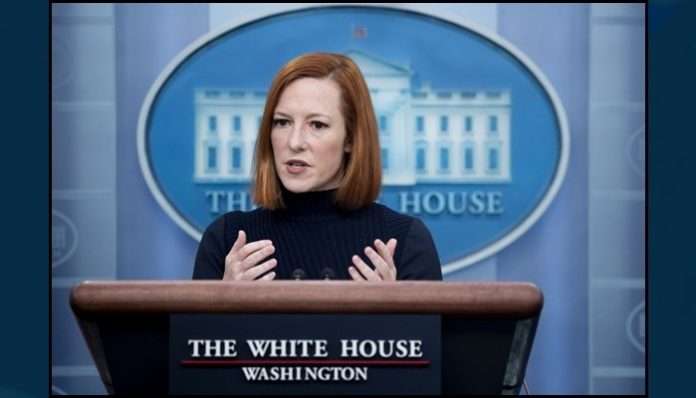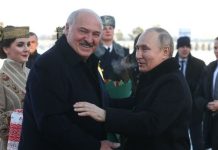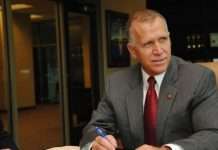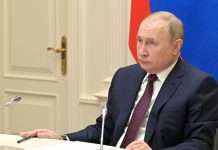
Jan. 25 (UPI) — The Pentagon announced Monday it has put up to 8,500 U.S. troops on heightened alert to deploy to Eastern Europe as tensions escalated over Russia’s military build-up on its border with Ukraine.
Defense Department press secretary John Kirby told reporters that “prepare to deploy orders” had been issued by Defense Secretary Lloyd Austin to troops stationed at several installations, although they have not yet been officially activated.
Most of the troops placed on alert are earmarked for NATO’s 40,000-member quick response force, or NRF, but Kirby said Austin is also preparing “for any other contingencies as well.”
“In the event of NATO’s activation of the NRF or a deteriorating security environment, the United States would be in a position to rapidly deploy additional brigade combat teams, logistics, medical, aviation, intelligence, surveillance and reconnaissance, transportation and additional capabilities into Europe,” Kirby said.
The U.S. move came amid heightened tensions over Russia’s presence near Ukraine’s border. NATO announced Monday that it’s placing additional military forces on standby and sending ships and fighter jets to Eastern Europe to deter and guard against a possible Russian invasion of Ukraine.
Later Monday, President Joe Biden conferred with European leaders in a secure video call to formulate a plan to handle new developments in the standoff.
The leaders “discussed their joint efforts to deter further Russian aggression against Ukraine, including preparations to impose massive consequences and severe economic costs on Russia for such actions as well as to reinforce security on NATO’s eastern flank,” the White House said in a readout of the meeting.
On the call with Biden was European Commission President Ursula von der Leyen, NATO Secretary-General Jens Stoltenberg, French President Emmanuel Macron, German Chancellor Olaf Scholz, Italian Prime Minister Mario Draghi, Polish President Andrzej Duda, British Prime Minister Boris Johnson and European Council President Charles Michel.
White House press secretary Jen Psaki said before the scheduled call that Biden and the European leaders would “discuss diplomacy, deterrence and defense efforts.”
“We have been consulting with allies and deployments and refining plans for all scenarios,” Psaki said of the possibility of deploying troops. “We have always said we would reinforce our allies on the eastern flank and those conversations and discussions have certainly been a part of what our national security officials have been discussing with their counterparts now for several weeks.”
NATO said it’s adding forces in the Baltic area as a show of force intended to dissuade Russian President Vladimir Putin from any possible designs he has on crossing into Ukraine.
“NATO allies are putting forces on standby and sending additional ships and fighter jets to NATO deployments in eastern Europe, reinforcing allied deterrence and defense as Russia continues its military buildup in and around Ukraine,” NATO said in a statement Monday.
The alliance said that Denmark sent a frigate to the Baltic Sea and is ready to send multiple F-16 fighter jets to Lithuania. Spain is sending ships, and France is prepared to send troops to Romania under NATO command.
The Netherlands is sending F-35 fighter jets to Bulgaria and putting a ship and land-based units on standby.
“The United States has also made clear that it is considering increasing its military presence in the eastern part of the alliance,” NATO added.

The Biden administration is discussing deploying as many as 5,000 U.S. forces to Eastern Europe as part of NATO’s deterrence reinforcement, according to unnamed officials speaking to NBC News and The New York Times.
The deployment of forces follows rising tensions between Russia and Ukraine — particularly along Ukraine’s eastern border, where about 100,000 Russian troops have been stationed for months, stoking fears that Moscow will invade the former Soviet state.
In 2014, Russia annexed Crimea from Ukraine, worsening a rift between Ukrainian forces and pro-Moscow separatists in the country.
“I welcome allies contributing additional forces,” Stoltenberg said in a statement. “NATO will continue to take all necessary measures to protect and defend all allies, including by reinforcing the eastern part of the alliance.
“We will always respond to any deterioration of our security environment, including through strengthening our collective defense.”
NATO was formed after World War II as a collective defense coalition and has 30 member states. Although Ukraine is not a member of the alliance, NATO recognizes it as an aspiring member country. Putin has said that Russia, which is not part of the alliance, strongly opposes Ukraine joining NATO.
NATO noted that it significantly increased its presence in Eastern Europe after Russia’s annexation of Crimea eight years ago. Estonia, Latvia, Lithuania and Poland received military support from NATO after the incursion.
The government in Ireland has expressed concern in recent days about Russian military drills off its coast. Irish foreign minister Simon Coveney said Monday the drills are “not welcome.” Officials in Britain said over the weekend that Putin is planning to overtake Ukraine and install a pro-Moscow regime in Kiev.
Despite its troop buildup near the Ukrainian border, Moscow has repeatedly denied that its planning any invasion.
Kremlin spokesman Dmitry Peskov said concerns over a future Russian invasion are “empty and groundless,” according to the state-run TASS news agency, and he accused NATO of escalating tensions.
Biden has warned Russia and Putin that there will be consequences for any attack against Ukraine. On Sunday, U.S. Secretary of State Antony Blinken said the United States will respond if a “single additional Russian force” crosses the border into Ukraine.
Blinken and Peskov met for talks in Switzerland over the weekend, with Ukraine as the central issue, but reached no agreement.
On Monday, State Department spokesman Ned Price told reporters that the United States and its allies are aligned on sending Russia one message: that if any Russian forces move across the border the Kremlin with be met with “a swift, severe and united response.”
“There is no ambiguity about that. There is no daylight. We know that. And importantly, the Russian Federation knows that,” he said.
The U.S. State Department on Sunday night ordered a reduction in staff at the U.S. Embassy in Kiev.
On Monday, Britain said some of its embassy staff and their family members were being withdrawn from the capital due to the growing Russian threat.
Von der Leyen also announced an assistance package of $1.3 billion for Ukraine to address its financial issues caused by the conflict as well as double its bilateral assistance for the year to the country.
“As ever, the EU stands by Ukraine in these difficult circumstances,” she told reporters during a press conference. “We are firm in our resolve.”





